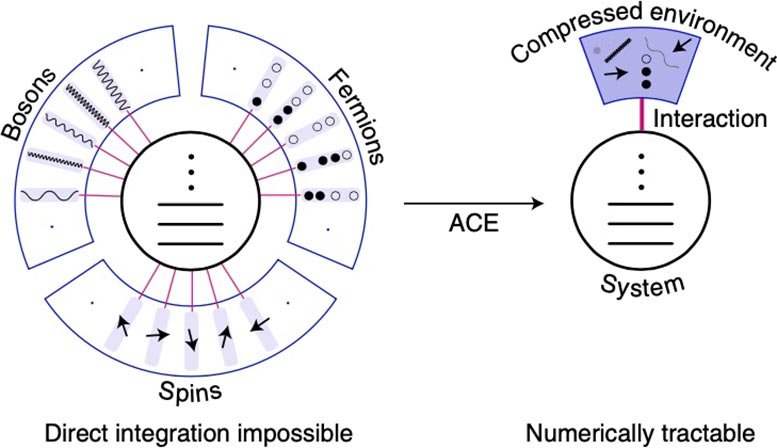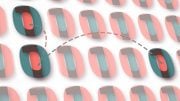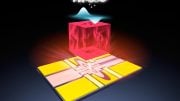
Scientists have developed the ACE algorithm to study qubit interactions and changes in their quantum state, simplifying quantum dynamics computation and paving the way for advancements in quantum computing and telephony.
Practical quantum computing is another step closer.
Researchers have introduced a novel algorithm called Automated Compression of Arbitrary Environments (ACE) designed to study the interactions of qubits with their surrounding environment and the ensuing changes in their quantum state. By simplifying the computation of quantum dynamics, this algorithm, grounded on Feynman’s interpretation of quantum mechanics, offers new avenues for understanding and harnessing quantum systems. Potential applications include advancements in quantum telephony and computing, providing more precise predictions about quantum coherence and entanglement.
Conventional computers use bits, represented by zeros and ones, to transmit information, whereas quantum computers use quantum bits (qubits) instead. Similar to bits, qubits have two main states or values: 0 and 1. However, unlike a bit, a qubit can exist in both states at the same time.
While this may seem like a baffling paradox, it can be explained through a simple analogy with a coin. A classic bit can be represented as a coin lying with heads or tails (one or zero) facing up, while a qubit can be thought of as a spinning coin, which also has heads and tails, but whether it is heads or tails up can only be determined once it stops spinning, ie loses its original state.
When a spinning coin stops, it can serve as an analogy for a quantum measurement, whereby one of the two states of the qubit is selected. In quantum computing, different qubits must be linked together, eg the states 0 (1) of one qubit must be uniquely correlated with the states 0 (1) of another qubit. When the quantum states of two or more objects become correlated, it is called quantum entanglement.
The Challenge of Quantum Entanglement
The main difficulty with quantum computing is that qubits are surrounded by an environment and interact with them. This interaction can cause the quantum entanglement of qubits to degrade, resulting in their disentanglement from one another.
An analogy with two coins can help in understanding this concept. If two identical coins are spun simultaneously and then stopped after a brief period, they may both end up with the same side up, either heads or tails. This synchronicity between spinning coins can be compared to quantum entanglement. However, if the coins continue to spin for a longer duration, they will eventually lose synchronicity and no longer end up with the same side—heads or tails—facing up.
The loss of synchronicity occurs because the spinning coins gradually lose energy, mainly due to friction with the table, and each coin does so in a unique manner. In the quantum world, friction, or the loss of energy due to interaction with the environment, eventually leads to quantum decoherence, meaning a loss of synchronicity between qubits. This results in qubit dephasing, where the phase of the quantum state (represented by the angle of rotation of the coin) changes randomly over time, causing a loss of quantum information and making quantum computing impossible.

Identification of an efficient representation is fully automatic and does not rely on any a priori approximations or assumptions. Credit: Alexei Vagov
Quantum Coherence and Dynamics
A key challenge faced by many researchers today is to preserve quantum coherence for longer periods. This can be achieved by accurately describing the evolution of the quantum state over time, also known as quantum dynamics.
Scientists from the MIEM HSE Centre for Quantum Metamaterials, in collaboration with colleagues from Germany and the UK, have proposed an algorithm called Automated Compression of Arbitrary Environments (ACE) as a solution for studying the interaction of qubits with their environment and the resulting changes in their quantum state over time.
Insight into Quantum Dynamics
“The almost infinite number of vibrational modes or degrees of freedom in the environment makes the computation of quantum dynamics particularly challenging. In fact, this task involves computing the dynamics of a single quantum system while it is surrounded by trillions of others. Direct calculation is impossible in this case, as no computer can handle it.
However, not all changes in the environment carry equal importance: those which occur at a sufficient distance from our quantum system are incapable of affecting its dynamics in major ways. The division into “relevant” and “irrelevant” environmental degrees of freedom lies at the basis of our method,” says Alexei Vagov, co-author of the paper, Director of the MIEM HSE Centre for Quantum Metamaterials.
Feynman’s Interpretation and the ACE Algorithm
According to the interpretation of quantum mechanics proposed by the famous American physicist Richard Feynman, calculating the quantum state of a system involves computing the sum of all possible ways in which the state can be achieved. This interpretation assumes that a quantum particle (system) can move in all possible directions, including forward or backward, right or left, and even back in time. The quantum probabilities of all such trajectories must be added up to compute the final state of the particle.
“The problem is that there are too many possible trajectories even for one particle, let alone the entire environment. Our algorithm makes it possible to consider only the trajectories which significantly contribute to the qubit’s dynamics while discarding those with negligible contributions. In our method, the evolution of a qubit and its environment is captured by tensors, which are matrices or tables of numbers that describe the state of the entire system at different points in time. We then select only those portions of the tensors which are relevant to the system’s dynamics,” explains Alexei Vagov.
Conclusion: Implications of the ACE Algorithm
The researchers emphasize that the Automated Compression of Arbitrary Environments algorithm is publicly available and implemented as computer code. According to the authors, it opens up entirely new possibilities for the precise computation of the dynamics of multiple quantum systems. In particular, this method makes it possible to estimate the time until entangled photon pairs in quantum telephony lines will become disentangled, the distance to which a quantum particle can be “teleported,” or how long it can take for the qubits of a quantum computer to lose coherence.
Reference: “Simulation of open quantum systems by automated compression of arbitrary environments” by Moritz Cygorek, Michael Cosacchi, Alexei Vagov, Vollrath Martin Axt, Brendon W. Lovett, Jonathan Keeling and Erik M. Gauger, 24 March 2022, Nature Physics.
DOI: 10.1038/s41567-022-01544-9








To decrease infinitesimally or remove completely friction and other factors around qubit(s), then manipulate the environment or change it to accommodate desired behaviors of any qubit(s).
You are right. According to topological vortex gravitational field theory, no particle can exist independently of the world.
One cat, countless baffling paradoxs, drives so-called scholars crazy. Playing with science to this point is a disgrace to today’s physics. Low dimensional spatiotemporal matter is the foundation of high-dimensional spatiotemporal matter. Topological vortices are point defects in two-dimensional spacetime. Point defects do not only impact the thermodynamic properties, but are also central to kinetic processes. Topological vortices are natural gravitational fields. Understanding how topological vortices interact with each other is more conducive to your scientific understanding of quantum mechanics, including The Challenge of Quantum Entanglement, which interests you.
Maybe the invention of a new language manipulative understood by qubits makeup